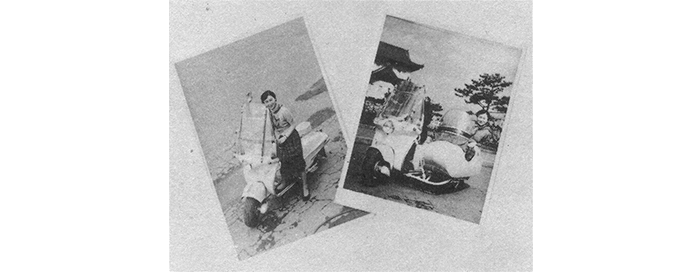
Top > Growth-story > The Coming of the Made-in-Japan Cars
No.12 The Coming of the Made-in-Japan Cars
Having built up basis of business organization in 1948, business divisions of Empire Motor were divided into Sales Division 1 (Domestic Sales), Sales Division II(special procurement and trade) and local business & distribution.
Business activities in around 1950 were expanded with 8 salesmen covering from Hokkaido to Kansai area. They were all busy visiting local shop owners, car dealers, bus companies and railroad authorities. They were on business trip for 23 days out of 25 working days a month.
Car makers started domestic production under technical tie-up with foreign car makers or under their own technology.
Japanese government promoted Japanese car industry by adopting policy of domestic production in 1952 in order to lessen the importation of new cars.

At the same time, spare parts makers also promoted technical tie up with car parts makers, Americans in particular, which together with their own efforts, showed quality improvement of spare parts.

Such introduction and supply of technology from abroad during late 20s and 30s increased in great number which contributed to the development and improvement of domestic car industries.
Domestic production of car started from 14,921 cars in 1946 reached to 1,702,475 cars in 1954 surpassing France to become No.4 in the world.
Having reached 2,060,000 car production in 1966 out of which 36%, i.e. 740,000 cars were passenger cars. It was the first year of the so-called “My Car Age”, the real start of the motorization.
Domestic car industry showed double-digit growth in 1940s.










